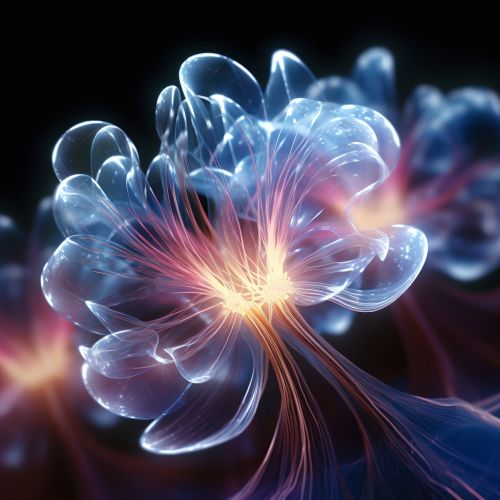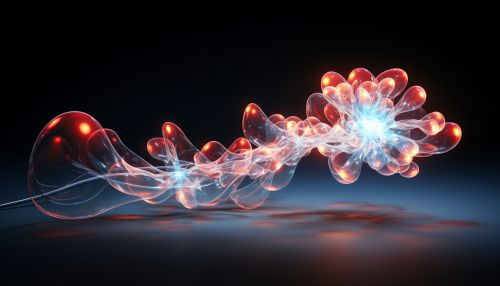Fluorescence Microscopy in Cell Biology
Introduction
Fluorescence microscopy is a specialized type of light microscopy that uses fluorescence and phosphorescence to study properties of organic and inorganic substances. It is an essential tool in cell biology, as it allows researchers to visualize cells and cellular components with a high degree of specificity and sensitivity.
Principles of Fluorescence Microscopy
Fluorescence microscopy is based on the principle of fluorescence. When a fluorescent molecule, or fluorophore, absorbs light of a specific wavelength, it becomes excited and then emits light of a longer wavelength. This emitted light is then collected by the microscope and used to create an image. The specific wavelengths of light that a fluorophore absorbs and emits are known as its excitation and emission spectra, respectively.


The use of fluorescence in microscopy allows for a high degree of specificity in labeling and imaging. By using fluorophores that bind to specific cellular components, researchers can selectively highlight these components and study their distribution and function within the cell. This is in contrast to traditional light microscopy, which relies on differences in contrast between different cellular components to create an image.
Types of Fluorescence Microscopy
There are several different types of fluorescence microscopy, each with its own advantages and limitations. These include:
Epifluorescence Microscopy
Epifluorescence microscopy is the most common type of fluorescence microscopy. In this technique, the excitation light is passed through the objective lens, which also collects the emitted light. This results in a high degree of sensitivity, but can also lead to high background signal due to the excitation light being reflected back into the objective lens.
Confocal Microscopy
Confocal microscopy uses a pinhole to eliminate out-of-focus light, resulting in sharper images and the ability to create three-dimensional reconstructions of the sample. However, this technique requires more complex equipment and can be slower than epifluorescence microscopy.
Two-Photon Microscopy
Two-photon microscopy uses two photons of longer wavelength to excite the fluorophore, resulting in less phototoxicity and deeper tissue penetration. However, this technique requires a more powerful light source and more sensitive detectors.
Super-Resolution Microscopy
Super-resolution microscopy is a group of techniques that overcome the diffraction limit of light to achieve resolution beyond that of traditional fluorescence microscopy. These techniques include stimulated emission depletion (STED) microscopy, stochastic optical reconstruction microscopy (STORM), and photoactivated localization microscopy (PALM).
Applications in Cell Biology
Fluorescence microscopy has a wide range of applications in cell biology. Some of the most common include:
Protein Localization
By using fluorophores that bind to specific proteins, researchers can visualize the distribution of these proteins within the cell. This can provide insight into the function of the protein, as well as the dynamics of its distribution in response to various stimuli.
Cell Division
Fluorescence microscopy can be used to study the process of cell division. By labeling the chromosomes with a fluorescent dye, researchers can visualize the process of mitosis and cytokinesis in real time.
Cell Signaling
Fluorescence microscopy can also be used to study cell signaling pathways. By using fluorophores that respond to specific signaling molecules, researchers can visualize the activation of these pathways in response to various stimuli.
Cell Migration
The movement of cells, or cell migration, is another process that can be studied using fluorescence microscopy. By labeling the cytoskeleton with a fluorescent dye, researchers can visualize the changes in cell shape and movement that occur during migration.
Limitations and Challenges
While fluorescence microscopy is a powerful tool in cell biology, it also has several limitations and challenges. These include photobleaching, where the fluorophores lose their ability to fluoresce after prolonged exposure to light, and phototoxicity, where the light used to excite the fluorophores can damage the sample. Additionally, the resolution of fluorescence microscopy is limited by the diffraction limit of light, although this can be overcome with super-resolution techniques.
Future Directions
The field of fluorescence microscopy continues to evolve, with new techniques and technologies being developed to overcome its limitations and expand its capabilities. These include the development of new fluorophores with improved brightness and photostability, the use of quantum dots for long-term imaging, and the development of new super-resolution techniques.
